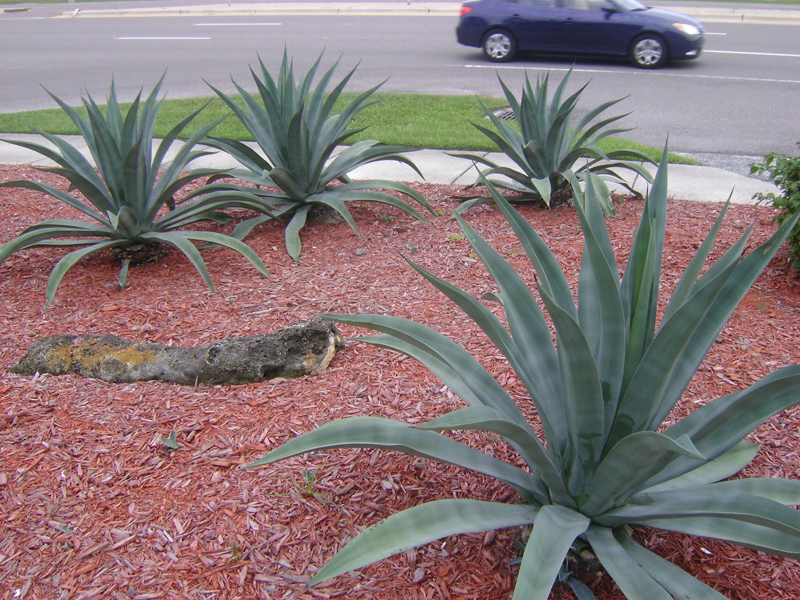In Orlando, you won’t have to wait one hundred years to see your century plant bloom. In warmer climates, this plant typically flowers after a decade or so. In colder regions, it may live as long as 60 years without blooming.
Century plant is a succulent that has no stem. Instead, it produces an abundance of thick, bluish-green leathery leaves arranged in a spiral pattern around a central core. The leaves are lined with jagged teeth and have sharp spines at the ends. Cultivate century plants away from sidewalks and paths and use caution when handling them.
After several years, century plants produce a towering inflorescence, 20 to 40 inches tall and studded with large and showy candelabra-like flowers in creamy white, pale yellow-green or bright yellow. Although the original plant dies after blooming, century plants produce numerous offshoots during their lifetime, so in a sense the original plant lives on.
Century plants are native to the Mexican desert and they have no problem with poor soils including acidic, alkaline, clay or sand. They grow rapidly in full sun, part sun or partial shade. As you would expect from desert dwellers, they are exceptionally drought tolerant and need watering only when the weather is very hot and dry. They can also withstand high levels of aerosol salt and will happily thrive in coastal regions.
Century plants are striking additions to rock gardens and desert or Mediterranean landscapes. They spread easily and will quickly fill a flowerbed or form an unusual and impenetrable hedge.


